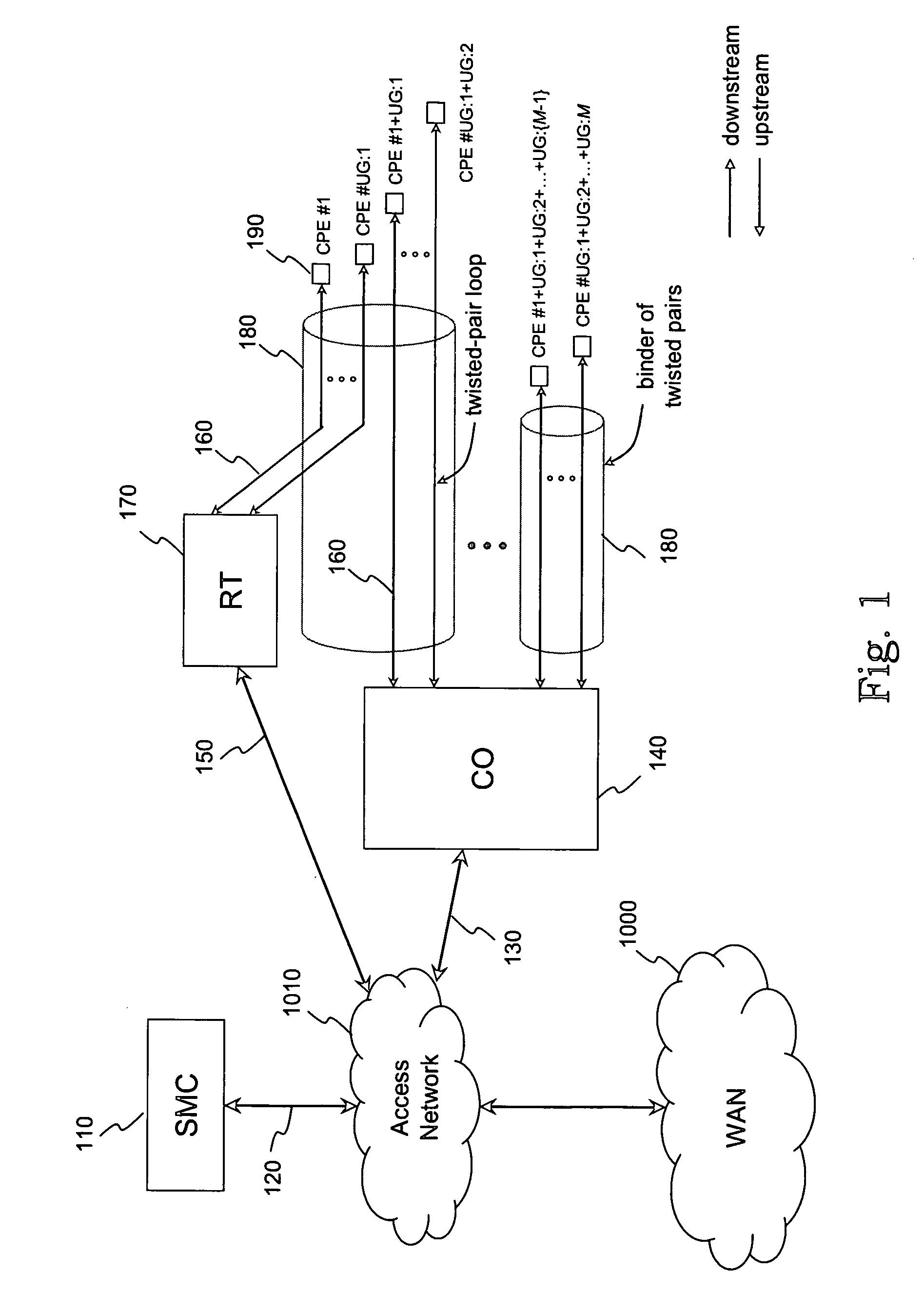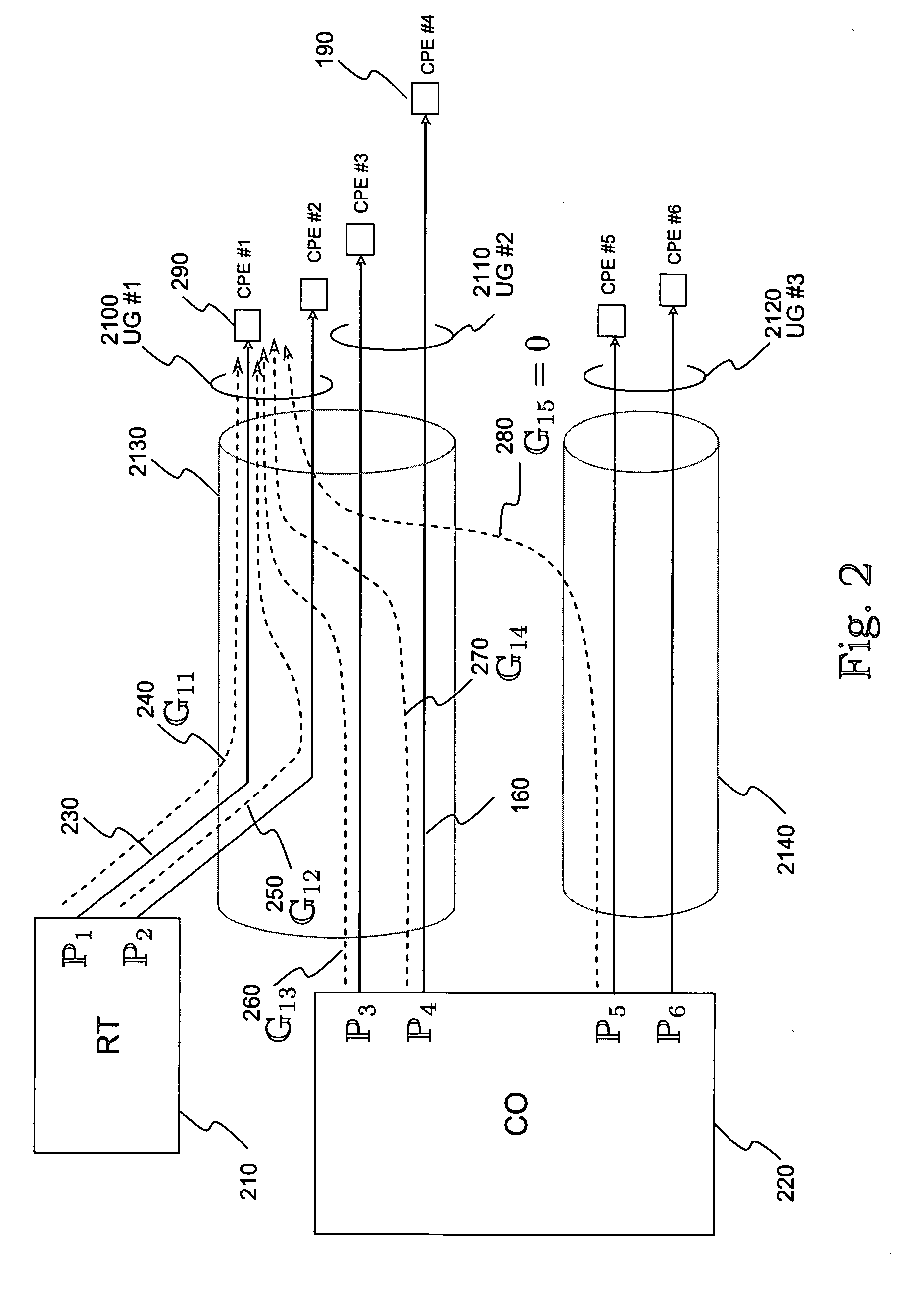Method for distributed spectrum management of digital communications systems
a technology of digital communication system and distributed spectrum, applied in the field of digital communication system improvement methods and systems, can solve the problems of forming spurious noise, interfering with intended transmissions, and crosstalk effects in addition to long loop lengths, and achieves the reduction of the level of inter-user communication, simplifying existing iwf approaches, and managing overhead. the effect of this approach
- Summary
- Abstract
- Description
- Claims
- Application Information
AI Technical Summary
Benefits of technology
Problems solved by technology
Method used
Image
Examples
Embodiment Construction
The present invention is described in connection with its preferred embodiment, namely as implemented into a multi-user digital subscriber line (DSL) system where discrete multitone (DMT) modulation is employed for communication between subscribers' customer premises equipment (CPE) and a central office (CO), and also between subscribers' CPE and remote terminals (RTs). These RTs are typically optical networking units (ONUs) or remote DSL access multiplexers (DSLAMs) deployed in modern DSL networks to shorten the length of copper twisted pair loops, with the aim of improving performance by decreasing the electrical signal attenuation on such lines. In the preferred embodiment, the said system will include an entity referred to as a spectrum management center (SMC) that coordinates the functions of one or more network elements (such as CPE, CO and / or RT) as described in detail below. In other embodiments, the SMC may directly control the functions of such network elements, or may no...
PUM
 Login to View More
Login to View More Abstract
Description
Claims
Application Information
 Login to View More
Login to View More - R&D
- Intellectual Property
- Life Sciences
- Materials
- Tech Scout
- Unparalleled Data Quality
- Higher Quality Content
- 60% Fewer Hallucinations
Browse by: Latest US Patents, China's latest patents, Technical Efficacy Thesaurus, Application Domain, Technology Topic, Popular Technical Reports.
© 2025 PatSnap. All rights reserved.Legal|Privacy policy|Modern Slavery Act Transparency Statement|Sitemap|About US| Contact US: help@patsnap.com



